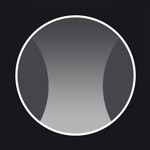These lenses are for those who have near focusing needs at more than one fixed distance. They are useful for someone who works at a desk, and needs to see reading material as well as a computer screen. They are also ideal for people who need to read, but occasionally stand while working. This lens type has no line, and offers a wider viewing area at near and intermediate than a multifocal. This lens power relaxes the amount of accommodation required to keep objects in focus at the distance of the computer screen and provides the largest field of view.
Single vision computer glasses reduce the risk of eye strain, blurred vision and unnatural posture that can cause neck and back pain, and can be used comfortably by young and old computer users alike. In the middle of the lens, the entire design is devoted to intermediate vision. If your lens is working for you, you can give your neck and back a break. You will not need to tilt your head to find the best optical zone in the lens.
These lenses are designed to match visual requirements with ergonomics. Comfortable vision and good working ergonomics are too important to leave to chance. Progressive readers are not suitable for distance tasks, like driving a car, especially at night.
Types
There are various manufacturers who make progressive readers, but essentially there are two types. The difference being in the power variation. The reduction from the near zone to the intermediate zone. For younger users, there is a lower more gradual reduction, due to the fact that the user is still able to exercise some accommodation themselves, and the lens is then just a helping hand, rather than doing all the focusing.
For older users (usually over the age of 50) the range is of a higher reduction, as at this point the lens is needed to do all the focussing, as the user has very little accommodative reserve. Based on the exacting needs and distances needed by the user, the lenses are customised to offer optimal support. There are instances where the eye care professional might choose to use one or the other design of lens based on the exact distances it is designed for.
Adaptation
There is always an Adaptation period for progressive reading lenses, especially if it is ones first pair. Minor peripheral distortions are unavoidable in progressive reading lenses. It is impossible to create a seamless (line-free) Progressive lens that has multiple powers for different viewing distances without also creating unwanted distortions somewhere in the lens.
Lens designers and manufacturers have made significant strides in minimizing these distortion areas and "pushing" them to the periphery of modern progressive lenses. But peripheral distortions will be present even when progressive lenses are flawlessly produced using the latest manufacturing equipment and processes — they are an unavoidable optical limitation of all progressive lenses. If you glance to the far right or left, especially when looking down, you might notice your vision is slightly blurred. Peripheral distortions also might cause you to experience a sensation of "swim" when you make quick head movements. It is normal for you to experience these problems when you start wearing a new pair of progressive lenses. You can usually eliminate them by making very slight head movements to look more directly at objects on your desk or workstation. A simple rule is to point with your nose where you want to see, and then slowly lift your chin, to find the clear spot on the lens that is suited to your viewing distance. Try to avoid moving closer or further from the object you are looking at, but rather move your chin up or down slowly to find the position on the lens that is suited to that distance.
Most people who notice peripheral vision problems when wearing progressive lenses find that these issues are relatively mild and disappear as they adapt to wearing the lenses over a period of a few days. Be fair to yourself by giving yourself a few days to adapt to your new lenses
Materials
These lenses are only available in plastic material. Technological and chemical advancements have produced Plastic materials that are well suited to spectacle lenses The plastic material most commonly used is known as CR39 ( "Columbia Resin 39"). It is a thermal-cured plastic developed in the early 1940s. CR-39 plastic remains a popular material for spectacle lenses because of its light weight (about half the weight of glass), low cost and excellent optical qualities.
Polycarbonate Material developed in the early 1970s, is also used due to its incredible impact resistance. Polycarbonate lenses became increasing popular and remain so today. This material is used for helmet visors for the Air Force, for "bulletproof glass" for banks and other safety applications, polycarbonate is lighter and significantly more impact-resistant than CR-39 plastic, making it a good material for children's eyewear, safety glasses and sports eyewear.
A newer lightweight lens material with similar impact-resistant properties as polycarbonate called Trivex was introduced for eyewear in 2001. The advantage of this material is its superior optical properties compared to polycarbonate.
Refractive Index
The refractive index of lenses refers to the light bending properties of the specific material. The more “dense” the material, the higher the refractive index. For example, Air has a refractive index of 1. And pure water has a refractive index of 1.33, and the densest clear material known to man is a diamond, which has a refractive index of 2.4. the higher refractive index also means the specific material reflects light more, as the light cannot enter it easily due to the increased density of the material, that is why diamonds “sparkle” as they do because they reflect the light more.
The refractive index of plastic ranges from 1.498 (CR-39 plastic) to 1.74 (a specific variety of high-index plastic). So, for the same prescription power and lens design, a lens made of CR-39 plastic will be the thickest and a lens made in 1.74 index plastic will be the thinnest.
The higher index lenses on the downside tend to reflect light more, and for this reason it is essential to treat the surfaces of these lenses with an Anti-reflective coating.
Tints
Tints of virtually any color can be applied to lenses. Lighter tints are often used because these lenses are predominantly used in an office environment. The tints in these cases are often to just reduce the effect of flicker from fluorescent lights, or the slight flickering of the computer screen. Some users find relief from a slight tint when working in an office, specifically when using a computer most of the day. Color can be added to a lens as a solid tint, where the entire lens has the same color density, or as a gradient tint, where the color density is darkest at the top of the lens and gradually fades to clear or nearly clear at the bottom.
Different colors can be applied to lenses for different purposes. Green, Blue, Green/grey, Grey, Soft Pink and Brown tints used in varying densities depending on user preference, are the most popular for these lenses.
Coatings
Cumulative exposure to the sun's harmful ultraviolet (UV) radiation over a person's lifetime has been associated with age-related eye problems including cataracts and macular degeneration. CRT monitors are also known to emit harmful ultraviolet rays.
For this reason, people should protect their eyes from UV beginning in early childhood.
An ultraviolet protective coating can be applied to plastic lenses to block out the harmful Ultraviolet rays. Polycarbonate and nearly all high-index plastic lenses have 100 percent UV protection built-in, due to absorptive characteristics of the lens material. Anti-reflective coating (also called "AR coating" or "anti-glare coating") improves vision, reduces eye strain and makes your spectacles look more attractive. These benefits are due to the ability of AR coating to virtually eliminate reflections from the front and back surfaces of your lenses. With reflections gone, more light passes through your lenses to optimize your vision with fewer reflections and ghost images. Apart from the optical benefits, this enhances your appearance by drawing more attention to your eyes and helping you make better "eye contact" with others.
Blue Control coatings are also recommended for these lenses, as research has shown that blue light can be a major factor and contributor to fatigue associated with continued computer use. This type of lens coating is referred to as a blue light filter coating. Thanks to blue light filter coatings, the harmful portion of blue light is cut while allowing the good portion of blue light to pass through. You can actually see the protection at work as blue light is being reflected off the lens. Due to the reduced amount of blue light entering the eyes, contrasts are improved by reducing screen brightness, flickering and eye fatigue to provide a strain-free visual experience while providing the most complete protection. Apart from the blue control filter coating, one should routinely take a short break every hour if your work situation requires extended periods of continuous computer use.
All lightweight plastic lens materials have surfaces that are significantly softer and more prone to scratches and abrasions than glass lenses. Polycarbonate is the softest lens material, but is also the most impact-resistant. All plastic and high-index plastic lenses require a factory-applied anti-scratch coating for adequate lens durability. Most of today's modern anti-scratch coatings (also called scratch coats or hard coats) can make your lenses nearly as scratch-resistant as glass.


